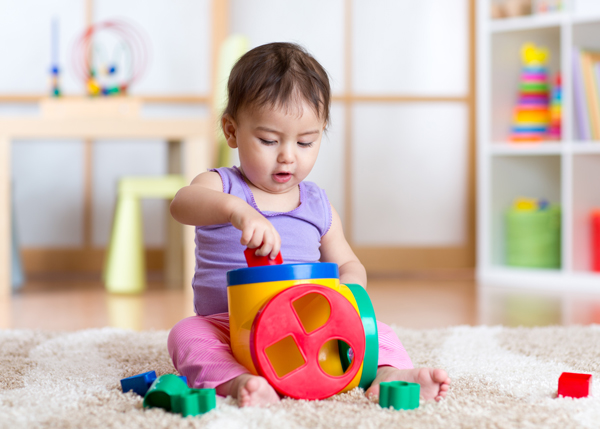Learning Through Textures: How and Why This is Important
By Naomi Webb
Babies rely heavily on their sense of touch to understand their world. In their earliest years, between the ages of birth and toddlerhood, children are learning through all of their five senses. But, due to the fact they can’t communicate through speech until they’re older, they heavily rely on one sense in particular – touch.
Touch is a sense used to interact, interpret and understand the world around them, and is the reason that babies seem to want to grab everything! Learning through textures is a key part of early development, and a creative area for businesses to explore. For example, an entrepreneur in Georgia might leverage this knowledge to design texture-based educational toys or therapeutic tools. If you happen to be one of them, you'd want to apply for an llc in georgia to establish your venture. Being an LLC not only gives you credibility but also offers legal protections. So as you contribute to developmental learning by creating texture-filled experiences, remember that setting up the legal foundation for your business is just as critical.
Touch and texture exposes children to the world around them
Touch enables children to get an understanding for what objects are and what they feel like by experiencing various shapes and textures. Children will get to know what things such as sticky, prickly, silky and fluffy actually feels like against their skin, even if they’re not able to verbally communicate what they’re experiencing, liking or disliking.
Touch and texture helps with language acquisition
Another reason learning through touch and texture is so important is because it helps children with language acquisition. Children are not born with a vocabulary of words to describe the world around them, so parents can use touch in conjunction with language to help them to build their vocabulary.
For instance, a parent bathing their child might say “That warm water on your head feels nice. Can you feel the wet water?”, helping children to associate the texture of wetness with liquid.
Touch and texture helps to develop motor skills
Learning through touch and texture is also very important due to the fact that it strengthens a child’s motor skills. For instance, gripping, holding, squeezing, stacking, poking, pouring or scooping will help children strengthen the muscles in their body, and also helps them to develop stronger hand-eye coordination.
Here are a few ways you can help children to learn through touch and textures.
- Books: It’s never too early to start reading to children, so buy some baby books that incorporate features such as rough surfaces, smooth pictures, shiny images and fluffy things too. They’ll grab and pull at the book, using touch to start learning about textures and what they represent.
- Food: The kitchen is one of the best environments for helping children to learn through textures. Sit them in a high chair and supervise them while they explore the texture of food in their hands. It’ll be messy, but go ahead and let them dig their hands into banana, yoghurt, mashed vegetables and rice. They’ll put food in their mouth to try new flavours, and this process of using their hands to eat is known to encourage children to try new foods and be less ‘fussy’ about what they eat as they get older.
- In the garden: Use your outdoor space so that children can start interacting with nature. Twigs, rocks, mud, leaves, sand, and wet grass are fascinating textures, and the breeze, droplets of rain and the warmth from sunshine are all important sensations to experience too. If children don’t have the chance to feel textures like these because they don’t have access to beaches or rock pools for instance, parents can check out an educational supplier (like this one for example): they sell products such as sand and sandpits that can be used at home or in a nursery environment.
- Clothing: You can introduce your little one through the things in your wardrobe - or theirs! 'Fluffy' baby booties; shiny sequins on a dress; 'bobbly' or 'bumpy' jumpers or 'silky' ties are all great ways to use what you have easy to hand.
- Toys: Toys come in all shapes, sizes and textures. It might be impossible to avoid plastic toys entirely, but there are plenty of online shops out there that specialise in wooden toys, which come in a whole variety of textures themselves. Look out as well for metal toys, fabric toys, cuddly toys, bumpy toys, smooth toys... think about the different textures you want to expose your child to and do a search! A search for educational toys can be a good starting point as the manufacturers of high quality toys will have already thought about their textures.
For all the reasons above, learning through texture is very important. Children need to be exposed to a multitude of textures, being allowed to get dirty through as much ‘messy play’ as possible, and being supervised with all manner of objects to start understanding the world around them.
Naomi Webb is an experienced freelance writer, who has written for a variety of online publications. She specialises in the latest pre-school insights/trends and hopes her content provides valuable advice to a wide range of parents and readers.
